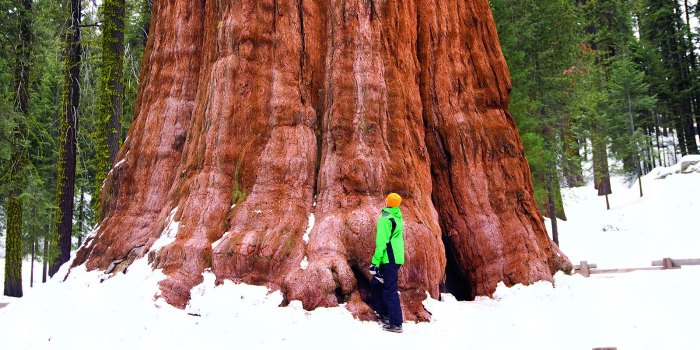Choosing the Right Sequoia Sapling

How to plant a sequoia tree – Selecting a healthy sequoia sapling is paramount to ensuring the successful establishment and growth of this majestic tree. The choice between a giant sequoia and a coast redwood, along with careful consideration of the sapling’s condition, will significantly influence its long-term survival and aesthetic appeal. Understanding these factors is crucial for any aspiring sequoia planter.
A healthy sequoia sapling exhibits several key characteristics. Look for a tree with a straight, unblemished trunk, free from any signs of disease or pest infestation. The needles should be a vibrant, healthy green, and the branches should be strong and evenly distributed. The root ball should be intact and moist, indicating a well-established root system. Avoid saplings with damaged or broken branches, discolored needles, or a dry, cracked root ball.
These are indicators of stress or potential problems. A vigorous sapling will possess a robust, well-developed root system, crucial for anchoring the tree and providing access to essential nutrients and water.
Planting a sequoia is a rewarding, albeit lengthy, commitment. Choosing the right spot with well-drained soil is key, much like when you’re considering planting other majestic trees. For a smaller, yet equally charming option, learn the delightful process of how to plant dogwood trees , then return to your sequoia, ensuring it receives ample sunlight and consistent watering for years of breathtaking growth.
Giant Sequoia (Sequoiadendron giganteum) and Coast Redwood (Sequoia sempervirens) Sapling Differences
Giant sequoias and coast redwoods, while both magnificent conifers, have distinct needs. Giant sequoias (Sequoiadendron giganteum) are known for their immense size and longevity, thriving in well-drained, slightly alkaline soil at higher elevations. They are more tolerant of drought conditions compared to coast redwoods. Coast redwoods (Sequoia sempervirens), on the other hand, prefer consistently moist, acidic soil and thrive in coastal regions with high humidity and ample rainfall.
They are less tolerant of drought and require more consistent moisture.
Selecting a Sequoia Sapling from a Reputable Nursery
Choosing a reputable nursery is crucial for obtaining a healthy and properly grown sequoia sapling. Reputable nurseries will offer plants that are grown in optimal conditions, ensuring a higher chance of success. When selecting a sapling, inspect it carefully for the characteristics mentioned earlier. Ask the nursery staff about the sapling’s origin, age, and growing conditions. Inquire about their pest and disease management practices.
A knowledgeable nursery staff can provide valuable advice on the specific needs of the variety you choose.
Sequoia Variety Comparison
The following table provides a comparison of different sequoia varieties, highlighting their mature size, sun exposure needs, and hardiness zones. This information aids in making an informed decision based on your specific planting location and environmental conditions.
| Sequoia Variety | Mature Size (approx.) | Sun Exposure | Hardiness Zones |
|---|---|---|---|
| Giant Sequoia (Sequoiadendron giganteum) | 200-300 ft tall, 10-25 ft diameter | Full sun to partial shade | 6-8 |
| Coast Redwood (Sequoia sempervirens) | 200-300 ft tall, 10-15 ft diameter | Full sun to partial shade | 7-9 |
| ‘Pendula’ (Coast Redwood cultivar) | 50-100 ft tall, weeping habit | Partial shade to full sun | 7-9 |
| ‘Aureovariegata’ (Coast Redwood cultivar) | Similar to species, variegated foliage | Partial shade to full sun | 7-9 |
Ongoing Care and Maintenance

Nurturing a young sequoia to its majestic potential requires diligent care and attention. Providing the right conditions ensures healthy growth and longevity, transforming a sapling into a towering testament to nature’s grandeur. Consistent effort in these crucial areas will yield significant rewards over the years.Regular watering is paramount, especially during periods of drought. A sequoia’s deep root system allows it to access groundwater, but supplementary watering, particularly during its early years, is vital for establishing a strong foundation.
The frequency and amount of water will depend on your local climate and soil conditions; however, consistently moist soil, without waterlogging, is key to optimal growth. Think of it as providing a consistent source of life-giving sustenance for your young giant.
Watering Requirements for Sequoia Trees, How to plant a sequoia tree
Sequoia trees, while remarkably drought-tolerant once established, require consistent moisture during their formative years. Newly planted saplings should be watered deeply and regularly, especially during hot and dry spells. Aim for a slow, deep watering that allows the water to penetrate the root zone thoroughly. The frequency will depend on rainfall; during dry periods, weekly deep watering may be necessary.
Observe the soil moisture levels – if the top few inches feel dry, it’s time to water. Overwatering can lead to root rot, so ensure good drainage. A mulch layer around the base of the tree will help retain soil moisture and suppress weeds.
Pest and Disease Prevention in Sequoia Trees
Sequoia trees are generally resistant to pests and diseases, but vigilance is essential. Potential threats include root rot (caused by excessive moisture), fungal infections (such as canker), and insect infestations (such as scale insects or spider mites). Preventative measures include ensuring good drainage, avoiding overwatering, and regularly inspecting the tree for signs of disease or infestation. Prompt action is crucial if any problems are detected; early intervention can often prevent significant damage.
Maintaining the tree’s overall health through proper watering and fertilization strengthens its natural defenses against pests and diseases. Consulting with an arborist is advisable if a serious problem arises.
Fertilization Schedule for Young Sequoia Trees
Young sequoia trees benefit from occasional fertilization to promote vigorous growth. Avoid over-fertilizing, as this can damage the tree. A balanced, slow-release fertilizer is recommended, applied once or twice a year during the growing season (spring and early summer). Use a fertilizer with a low nitrogen content to avoid excessive foliage growth at the expense of root development.
For a young tree (under 5 years old), apply approximately 1-2 pounds of fertilizer per year, spread evenly around the drip line (the outer edge of the tree’s canopy). Always follow the manufacturer’s instructions carefully. Observe the tree’s growth; if it appears healthy and vigorous, you may not need to fertilize every year.
Sequoia Tree Growth and Development: How To Plant A Sequoia Tree

Sequoia trees, majestic giants of the forest, exhibit remarkable growth patterns throughout their lengthy lifespans. Understanding these patterns provides valuable insight into their development and the factors influencing their impressive size. This section will detail the typical growth rates at various life stages, comparing and contrasting the growth habits of the two main species: giant sequoia (Sequoiadendron giganteum) and coast redwood (Sequoia sempervirens).
Growth Rate at Different Life Stages
The growth rate of a sequoia tree is not constant; it varies considerably depending on the tree’s age, environmental conditions, and species. Younger trees generally exhibit faster growth than mature trees, with growth slowing significantly as they reach their maximum height. Optimal conditions, such as ample sunlight, water, and nutrient-rich soil, significantly enhance growth rates. Conversely, periods of drought or disease can drastically reduce growth.
Giant Sequoia vs. Coast Redwood Growth Patterns
While both giant sequoia and coast redwood are renowned for their size, their growth patterns differ subtly. Coast redwoods, typically found in coastal regions with consistently high rainfall, exhibit faster initial growth and a greater height potential than giant sequoias. Giant sequoias, adapted to drier, higher-elevation environments, often display slower but more consistent growth, prioritizing girth over height. Their robust root systems and thick bark contribute to their remarkable longevity and resilience to environmental stressors.
Sequoia Growth Stages
The following table summarizes the average growth stages of a sequoia tree, encompassing both giant sequoia and coast redwood species, recognizing that individual variation is significant. Growth rates are heavily influenced by site conditions and may vary considerably.
| Stage | Age Range (Years) | Height Growth (Average meters/year) | Other Notable Changes |
|---|---|---|---|
| Seedling | 0-5 | 0.3-0.6 | Rapid root development, establishment of a central leader. Vulnerable to drought and herbivores. |
| Sapling | 5-20 | 0.6-1.5 | Increased height and diameter growth, development of lower branches. Begins to compete with surrounding vegetation for resources. |
| Young Tree | 20-50 | 1-2 (Coast Redwood); 0.5-1 (Giant Sequoia) | Significant height increase, crown expansion. Bark thickens, becoming more resistant to fire and pests. |
| Mature Tree | 50-1000+ | 0.1-0.5 (variable, decreasing with age) | Growth slows considerably; focus shifts from height to girth. Development of distinctive bark characteristics (deep furrows in Giant Sequoia, reddish-brown in Coast Redwood). |
Question Bank
What is the best time of year to plant a sequoia?
Early spring or late fall, after the threat of frost has passed, is generally ideal. This allows for root establishment before the heat of summer or the freeze of winter.
How much space does a sequoia tree need?
Sequoias require ample space. Consider the mature size of the variety you choose; coast redwoods grow taller and wider than giant sequoias, needing significantly more space.
Can I transplant an established sequoia?
Transplanting mature sequoias is extremely difficult and rarely successful. It’s best to plant a sapling in its permanent location.
How often should I fertilize a young sequoia?
Young sequoias benefit from a balanced fertilizer application once or twice a year, typically in spring and early summer. Avoid over-fertilizing.
